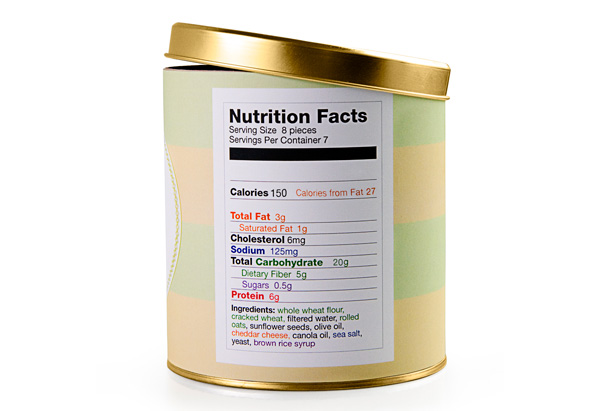5 Ways to Decode Food Labels at the Grocery Store
Tips for identifying the good, the bad, and the nutritionally bankrupt on your supermarket's shelves.

Photo: Dan Saelinger
"Nutrition Facts" aren't as straightforward as they seem. Some numbers and ingredients can be confusing and even deceptive. ("Wheat flour" sounds wholesome, right? Turns out it's code for white flour.) Jeff Novick, the nutritional director of Meals for Health, a project that educates low-income families about how to eat well, has developed five guidelines for judging nutritional value. If a product passes all five tests, it's genuinely good for you. (And if not, enjoy it as an occasional treat.)
Fat
Calories from fat should constitute no more than 20 percent of the total number of calories. And check the ingredients. Items are listed in descending order by weight, so the position of an item indicates whether there's a little of it or a lot. You don't want hydrogenated or highly saturated fats among the first five items—meaning butter, lard, cocoa butter, palm oil, palm kernel oil, partially hydrogenated vegetable oil, margarine, or shortening.
Sugars
Ignore the grams of sugar (listed under "Total Carbohydrate"). That number doesn't tell you what type of sugar the product contains—natural (like lactose in milk and fructose in fruit) or added (the kind that's full of empty calories). Instead, skip to the ingredients. There shouldn't be any added sugars in the first three to five spots. That includes brown sugar, invert sugar, brown rice syrup, agave nectar, honey, sucrose, evaporated cane juice, and high-fructose corn syrup.
Sodium
In general, the number of milligrams of sodium per serving should be less than the number of calories per serving. The average adult woman eats roughly 2,000 calories a day, and shouldn't consume more than about 2,000 milligrams of sodium a day (ideally, 1,500 milligrams a day). So if you can beat that 1:1 ratio with each item you eat, you'll stay under your salt limit.
Grains
If the product contains grains, it's better if they're whole (containing all their naturally occurring nutrients) than processed. Scan the ingredients for these words: "cracked," "rolled," "stone-ground," "crushed," "graham," and, of course, "whole." (These are terms used to describe ingredients made from an entire grain kernel.) Another good test: Look for at least three grams of dietary fiber per 100 calories.
Protein
Here's one nutrient you can stop worrying about. Protein is found in nearly every food, from blueberries to oatmeal. As long as you're consuming enough calories from a variety of foods to maintain a healthy weight, you're likely getting the recommended amount of protein (for women, 46 grams a day).
More Ways to Eat Right
Fat
Calories from fat should constitute no more than 20 percent of the total number of calories. And check the ingredients. Items are listed in descending order by weight, so the position of an item indicates whether there's a little of it or a lot. You don't want hydrogenated or highly saturated fats among the first five items—meaning butter, lard, cocoa butter, palm oil, palm kernel oil, partially hydrogenated vegetable oil, margarine, or shortening.
Sugars
Ignore the grams of sugar (listed under "Total Carbohydrate"). That number doesn't tell you what type of sugar the product contains—natural (like lactose in milk and fructose in fruit) or added (the kind that's full of empty calories). Instead, skip to the ingredients. There shouldn't be any added sugars in the first three to five spots. That includes brown sugar, invert sugar, brown rice syrup, agave nectar, honey, sucrose, evaporated cane juice, and high-fructose corn syrup.
Sodium
In general, the number of milligrams of sodium per serving should be less than the number of calories per serving. The average adult woman eats roughly 2,000 calories a day, and shouldn't consume more than about 2,000 milligrams of sodium a day (ideally, 1,500 milligrams a day). So if you can beat that 1:1 ratio with each item you eat, you'll stay under your salt limit.
Grains
If the product contains grains, it's better if they're whole (containing all their naturally occurring nutrients) than processed. Scan the ingredients for these words: "cracked," "rolled," "stone-ground," "crushed," "graham," and, of course, "whole." (These are terms used to describe ingredients made from an entire grain kernel.) Another good test: Look for at least three grams of dietary fiber per 100 calories.
Protein
Here's one nutrient you can stop worrying about. Protein is found in nearly every food, from blueberries to oatmeal. As long as you're consuming enough calories from a variety of foods to maintain a healthy weight, you're likely getting the recommended amount of protein (for women, 46 grams a day).
More Ways to Eat Right



